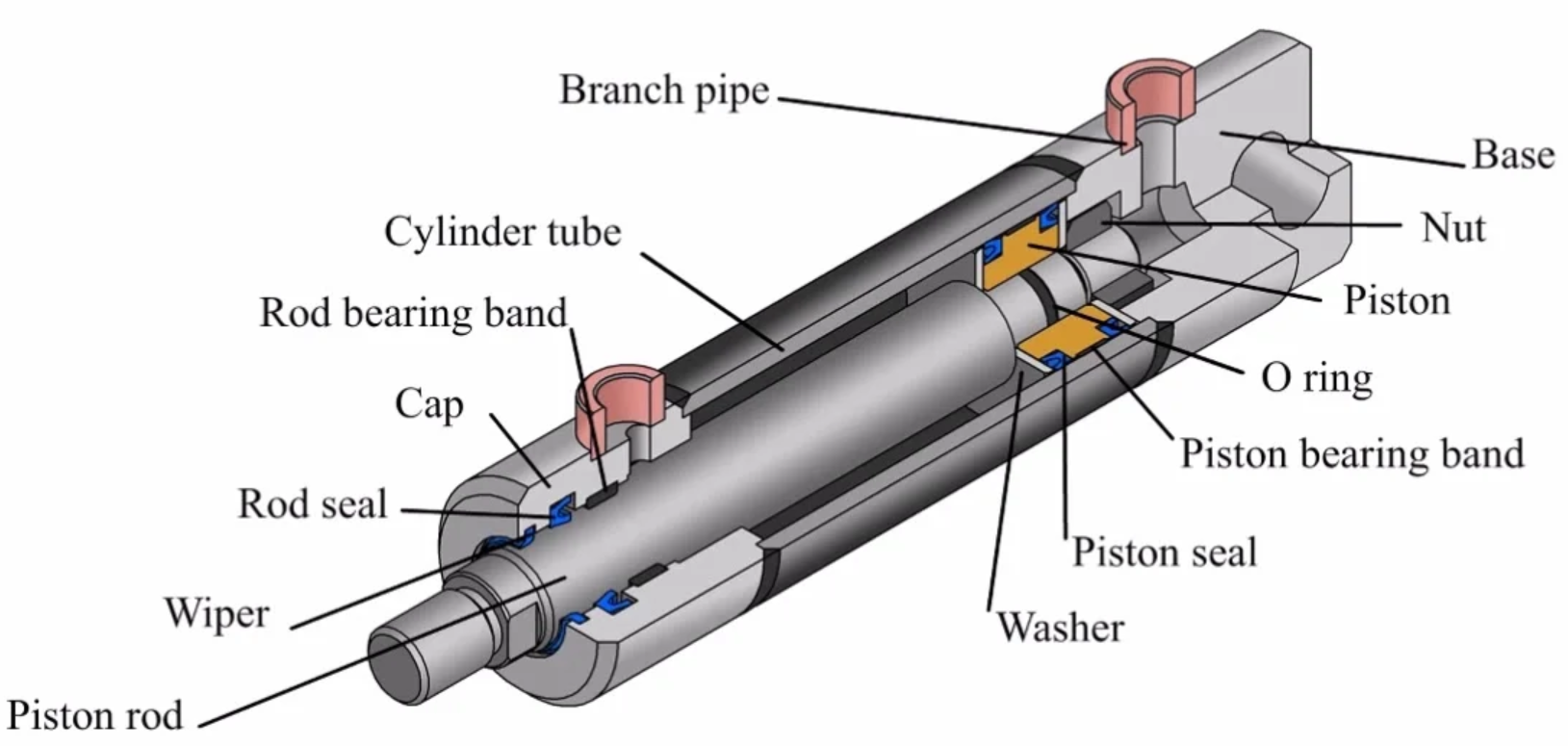Hydraulic cylinders are essential components in various types of machinery and equipment, providing the force necessary to move and lift heavy loads. From tractor hydraulic cylinders to scissor lift cylinders, these powerful devices are found in industrial, agricultural, and construction applications. But how does a hydraulic cylinder actually work? Let’s break it down and explore the key elements and operations behind this critical piece of equipment.
A hydraulic cylinder, also known as a hydraulic ram, is a mechanical actuator that uses hydraulic fluid under pressure to produce linear motion and force. It consists primarily of a cylinder barrel, a piston, and a piston rod. When pressurized fluid enters the cylinder, it pushes against the piston, causing it to move and deliver mechanical force.
Hydraulic cylinders are often found in applications such as tractor loader cylinders, outrigger cylinders, and tie rod cylinders. These systems are built for durability and high performance in demanding environments.

The basic operation of a hydraulic cylinder involves:
There are two main types of hydraulic cylinders:
Over time, hyd cylinder parts can wear out due to heavy use or environmental exposure. Replacement tractor loader cylinders are widely available and often come with seals, piston rings, and rods pre-installed.
When selecting replacement components or complete units, it’s important to consider:
For agricultural equipment like tractor hydraulic cylinders, durability and compatibility with existing systems are crucial.
Here are a few common types and where they’re typically used:
At the core of every hydraulic cylinder is the hydraulic cylinder and piston assembly. The piston divides the internal space of the cylinder into two chambers. When fluid enters one side, it pushes the piston and expels fluid from the opposite side. This movement is what generates the force needed for the machine’s function.
Double acting designs offer greater flexibility and power, especially where continuous and controlled motion is required.
Understanding how a hydraulic cylinder works provides insight into the machinery that powers everything from farm equipment to industrial lifts. Whether you're maintaining replacement tractor loader cylinders or installing new tie rod cylinders, knowing the components—such as the piston, hydraulic rams, and acting hydraulic cylinder mechanisms—is key to efficient operation and safety.
With regular maintenance and the right hyd cylinder parts, hydraulic systems can offer long-lasting, powerful performance across countless applications.